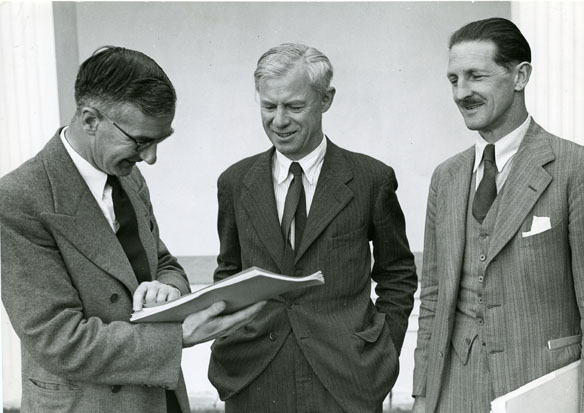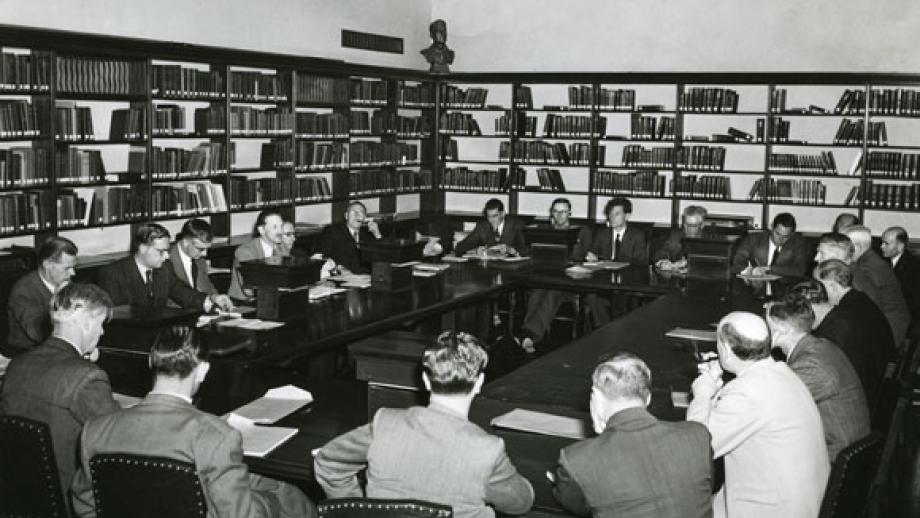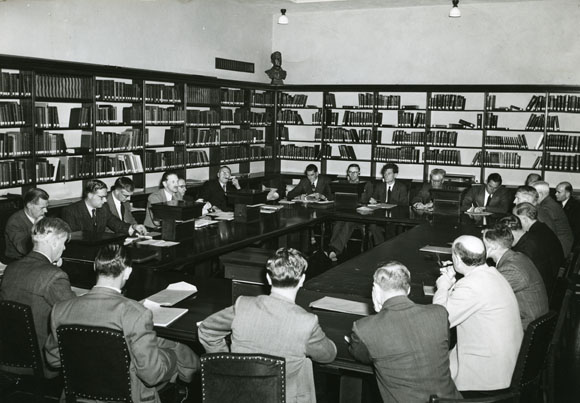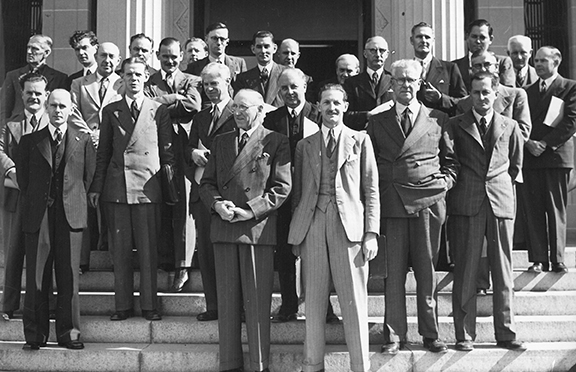Firth and the Conference on Pacific Studies
Born in New Zealand and currently at the London School of Economics and Politics [LSE], Professor Raymond William Firth (1901-2002) had lectured at the University of Sydney in the early 1930s. His study of kinship and livelihood among 1,200 people on a remote Polynesian atoll was published in 1936 as We, the Tikopia, an innovative study in the relatively new field of social anthropology. By the time of the Easter Conference, he had spent ten years nurturing the LSE’s Department of Anthropology, encouraging research on the Pacific, East Africa, South America, southern Europe, Malaya, Japan, China - an ever-expanding area of interest.
World War II had confirmed that Australians needed to broaden their knowledge of the Pacific and to recognise that demands by colonial peoples for autonomy were dramatically changing the world picture.
The 1946 Act establishing the ANU made it clear that the School of Pacific Studies and the School of Social Sciences were worthy of being separate entities, but the way in which they would interact was still an open question – should they be located in the same building and share staff?
As the Pacific was such a huge geographical area, decisions needed to be made about the regions to be studied and within that selection, the most appropriate fields for investigation. The main topics for discussion were Anthropology, Economics, History and Geography.
One of the stumbling blocks at the time of the Easter Conference was the difference of opinion between Firth and fellow anthropologist Sir Frederic Eggleston. Firth wanted to concentrate mainly on Anthropology whereas Eggleston, who claimed that such a School was his idea in the first place, favoured a broader approach. This difference was not resolved at the Conference, but it was agreed that China was too troubled and too inaccessible at this time to be included as a major area for research.
In 1994 the School changed its name to the Research School of Asia and the Pacific, an indication that over the passage of time, Eggleston’s broader approach prevailed.





